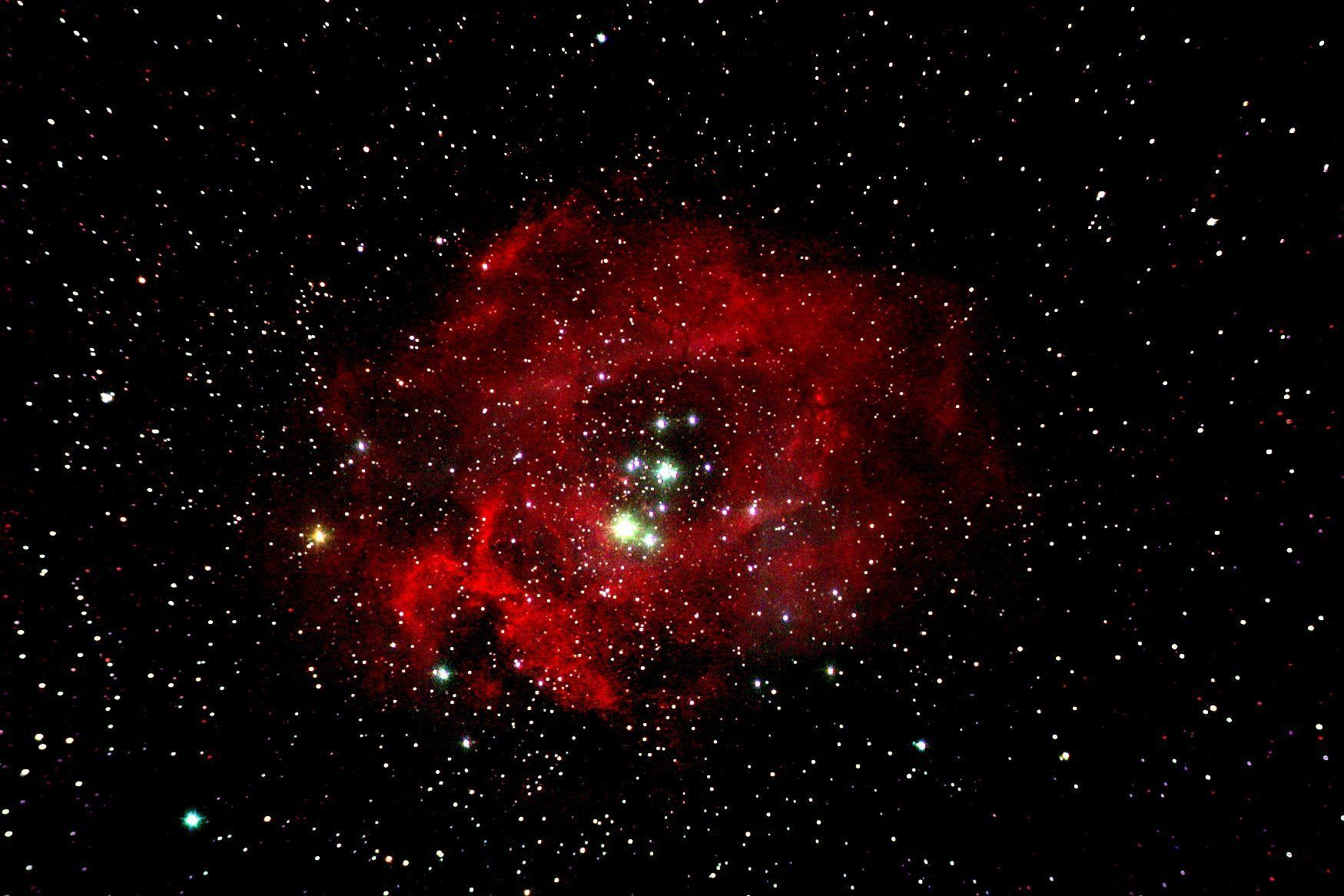DSO of the Month
Caldwell 50
AKA: Satellite Cluster; NGC 2244.
Position: 6 hr 31.9 min 4 deg 56 min 30 sec
Due south at 22:51 (GMT) on 15 January
Image of Caldwell 49 and 50 by HAS Member Martin Gill.
Used with permission.
This could have been about Caldwell 49, the Rosette Nebula, but I decided to talk about Caldwell 50 because the star cluster is much easier to see visually than the emission nebula. In the DSO of the month for December 2020, I remarked that the Orion Nebula is 3 million years old and it will soon become an open cluster. Caldwell 50 is bit like one of Fanny Craddock’s dishes she made earlier for it is a cluster that is five million years old and hence gives us a view of the Orion Nebula in a million years or so. Like the Orion Nebula, it contains some enormous O type stars which can be 400,000 brighter than the Sun. This also means that they will be short-lived and will survive for less than a million years.
Visually the cluster is quite bright, being magnitude 4.8, and it is rather smaller than the full Moon. It was discovered by the Astronomer Royal John Flamsteed in 1690. To find it follow the line made by Lambda Orionis (Meissa) and Betelgeuse (Alpha Orionis) until it is directly above Sirius. It is just to the east (or left) of the well-known double star Epsilon (8) Monocerotis. The brightest star in the group, 12 Monocerotis, is actually a foreground star as it is only 466 light years away while the cluster is 5,300 light years distant; it is magnitude 5.8. It is not clear why it is called the Satellite Cluster and the name appears to be of recent origin. Given the current importance of satellite clusters (and satellite constellations) in the literal sense, it is perhaps a name that is best forgotten. Now let’s turn to the Rosette Nebula like a red wreath. It is still a star-forming region and the powerful ionising radiation from the young O stars in the cluster excites the gas in the surrounding nebula, producing mostly H-alpha radiation in the visible region. There is also X-ray emission, but fortunately that is blocked by our atmosphere as well as being invisible. You might think this would create a visual spectacle like the Orion Nebula, but unfortunately it does not. The Rosette Nebula is not as bright as M42 and the red hydrogen-alpha radiation is not perceived very well by the rods in the human retina used for night vision. Using a hydrogen-alpha filter only makes matters worse in contrast to an OIII filter. In dark conditions it is possible to make it out as a grey fuzzy circle with a telescope or large binoculars, but it is not particularly spectacular. It is really is one of these deep-sky objects which are best left to imagers.
ARCHIVE
